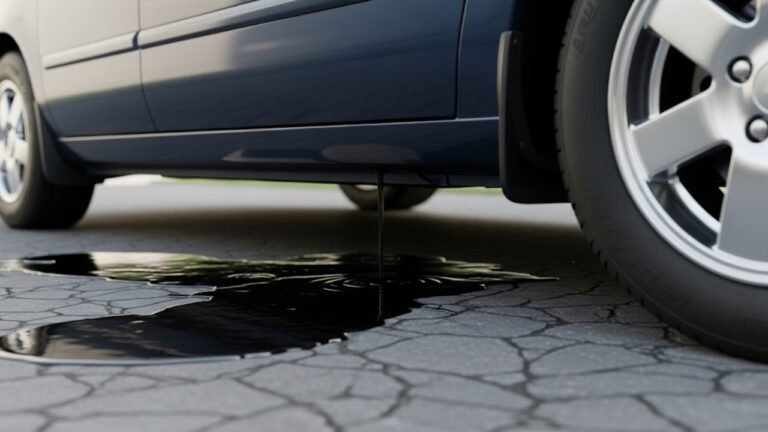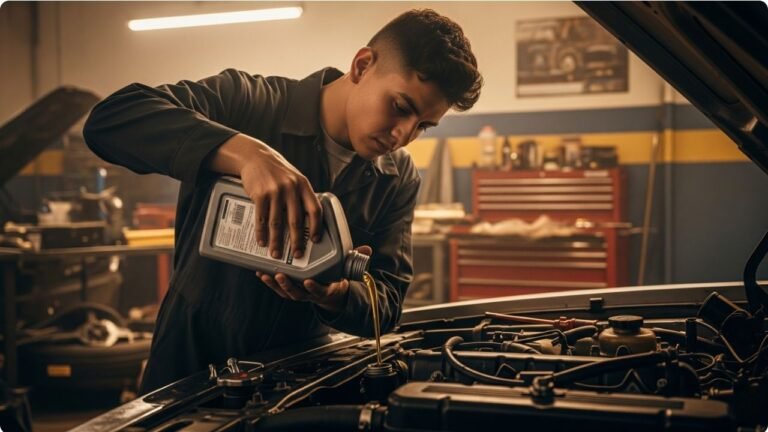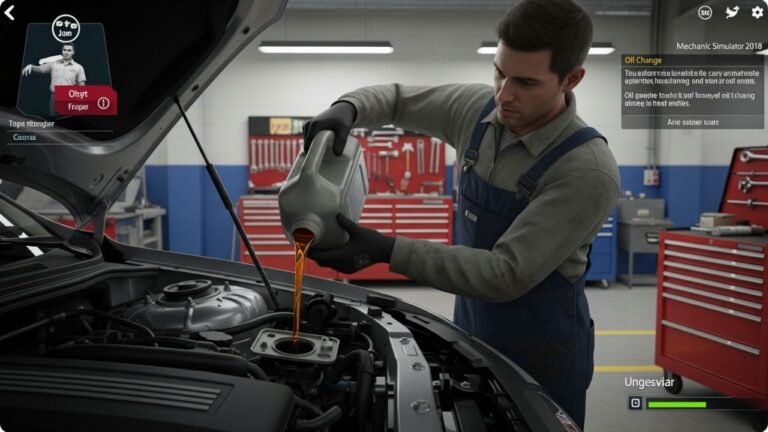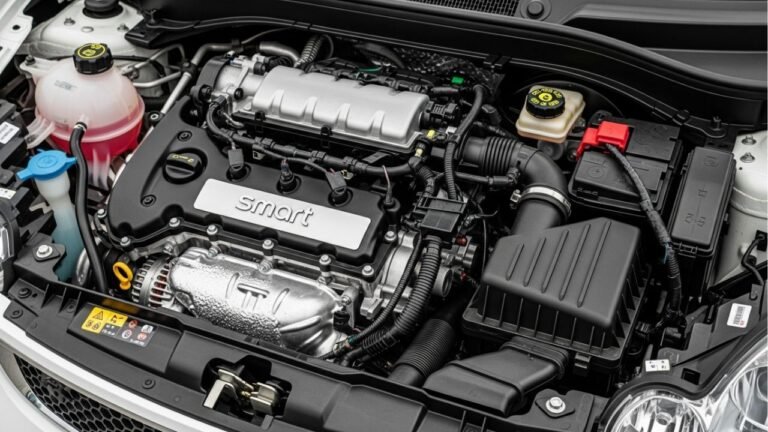Why Your Car Won’t Start Low Oil Pressure
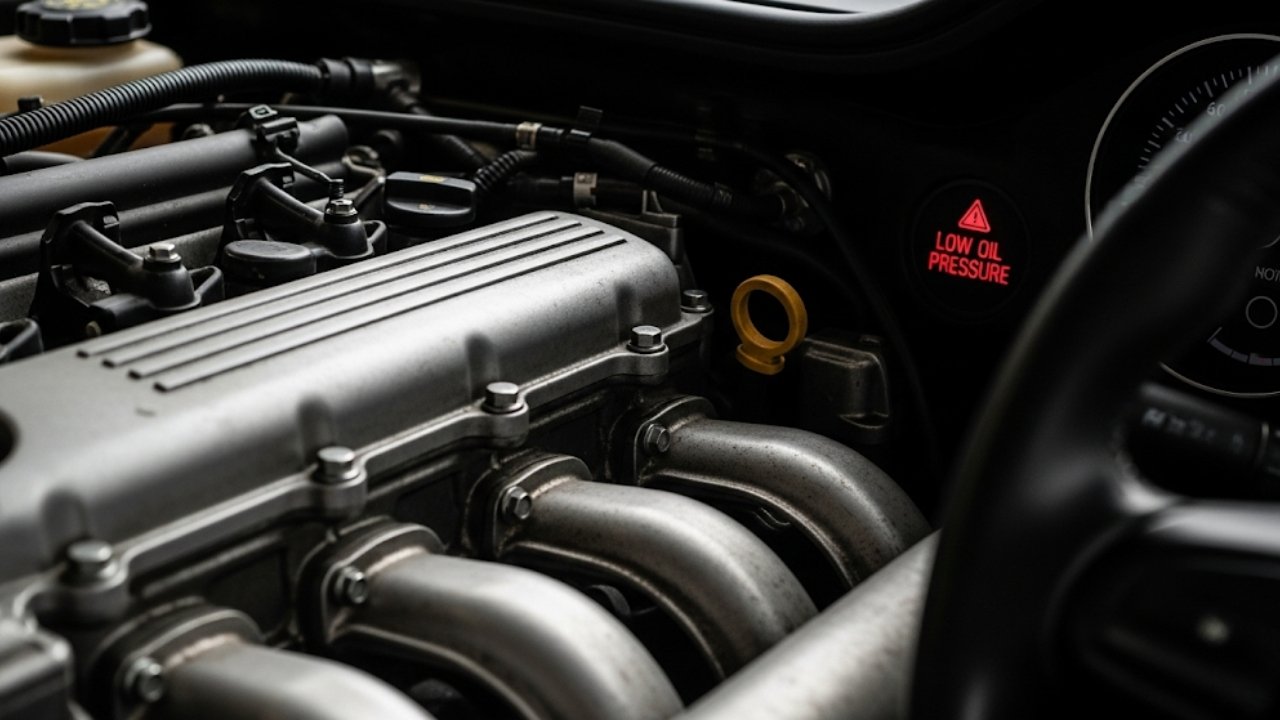
We’ve all been there. You jump in your car, turn the key or push the button… and nothing. Dead silence. Or maybe it cranks, sputters, then gives up. You’re stuck wondering, “Is it the battery? Starter? Or… wait—could it be low oil pressure?”
It sounds strange at first, right? Can low oil pressure really stop your car from starting? The short answer is yes, in many cases. But the reasons go deeper than you might think. And the consequences? Well, let’s just say they can range from a cheap fix to a totaled engine.
In this friendly guide, I’ll walk you through the emotional rollercoaster and mechanical logic of why a car won’t start low oil pressure, sharing personal stories, down-to-earth insights, and clear explanations you don’t need a mechanic to understand.
In This Article
- 1 The Moment You Realize Something’s Wrong
- 2 What Does “Low Oil Pressure” Actually Mean?
- 3 ⚠️ Early Signs Before Your Car Refuses to Start
- 4 Why a Car Won’t Start Low Oil Pressure: The Real Reasons
- 5 Personal Story: A Costly Mistake I’ll Never Make Again
- 6 Why Modern Cars Might Stop Starting Automatically
- 7 Diagnosing the Problem Without Guessing
- 8 Common Myths About Low Oil Pressure and Starting Issues
- 9 What to Do If Your Car Won’t Start and You Suspect Low Oil Pressure
- 10 Quick Bullet Recap: What You Need to Remember
- 11 Fixing Low Oil Pressure So Your Car Starts Again
- 12 Preventing Low Oil Pressure in the First Place
- 13 Common Car Models Where Oil Pressure Prevents Starting
- 14 Driving Habits That Can Ruin Oil Pressure
- 15 Real Talk: Emotional Impact of Car Trouble
- 16 ❓ Frequently Asked Questions (FAQs)
- 16.1 1. Can low oil pressure really prevent my car from starting?
- 16.2 2. Will adding oil fix the issue immediately?
- 16.3 3. Is it dangerous to drive with low oil pressure?
- 16.4 4. How do I know if the oil pressure sensor is the problem?
- 16.5 5. Can I use any motor oil in an emergency?
- 16.6 6. How often should I check my oil?
- 16.7 7. What’s the cheapest way to fix this?
- 16.8 8. Can an oil pressure problem damage the starter?
- 17 Final Thoughts: What Your Car’s Trying to Tell You
The Moment You Realize Something’s Wrong
A couple of years back, I was getting ready for a road trip to the coast. Bags packed, playlist loaded, snacks in the glovebox. I hop in my old Honda, hit the ignition—click, click, nothing. My heart sank.
I had just done an oil change a few weeks earlier, so oil wasn’t even on my radar. Turns out, I had a tiny oil leak and didn’t check the level. That low oil pressure was enough to keep the engine from starting.
The whole trip was delayed. I was frustrated, sweaty, and embarrassed. But I also learned a lesson that day—and I’m here to save you from the same fate.
What Does “Low Oil Pressure” Actually Mean?

When the pressure is too low:
-
The engine can’t stay cool.
-
Metal parts rub against each other.
-
Damage can happen fast.
-
Some cars won’t start as a protective measure.
So yes, your car won’t start low oil pressure because the engine is basically saying, “I’m not risking this.”
⚠️ Early Signs Before Your Car Refuses to Start
Your car usually gives you some heads-up before it just goes silent. Here’s what to watch for:
-
Oil warning light on your dashboard
-
Knocking or ticking sounds from the engine
-
Burning oil smell
-
Engine running hot
-
Oil spots under your parked car
If you ignore these signs, your car may reach a point where it refuses to start at all—not to be annoying, but to protect itself.
Why a Car Won’t Start Low Oil Pressure: The Real Reasons
You might be wondering: “Isn’t a battery or starter issue more likely?” Sure, but low oil pressure has its own unique ways of halting your engine. Let’s look at the main culprits:
| Cause | Description | Impact |
|---|---|---|
| Oil pump failure | Pump can’t circulate oil | No pressure = no lubrication |
| Clogged oil filter | Dirty oil blocks flow | Pressure drops drastically |
| Too little oil | From leaks or burning | Engine goes dry |
| Faulty oil pressure sensor | Gives wrong readings | Can trick ECU |
| Engine control unit (ECU) lockout | ECU blocks start to prevent damage | Common in modern cars |
When low oil pressure is detected, some cars’ ECUs (engine computers) prevent the car from starting. It’s like a safety lock to avoid catastrophic damage.
Personal Story: A Costly Mistake I’ll Never Make Again
A friend of mine ignored their oil light for weeks. “It’s probably just the sensor,” they shrugged. One morning, their car wouldn’t start. Towed it to a mechanic. Diagnosis? Oil pump failure caused by sludge buildup. Engine seized.
They ended up replacing the entire engine.
Cost? Over $4,000.
If you’re dealing with low oil pressure, don’t roll the dice. Your engine’s trying to tell you something important.
Why Modern Cars Might Stop Starting Automatically
Cars have gotten a lot smarter. Many newer models are built to protect themselves from engine damage by refusing to start if oil pressure is too low.
Here’s what your car’s brain might be doing:
-
Checks oil pressure at startup
-
Compares it to safety threshold
-
If it’s too low, disables fuel injectors or ignition
-
You’re left scratching your head at the silent engine
This isn’t a flaw—it’s actually a brilliant fail-safe that could save your engine.
Diagnosing the Problem Without Guessing
So how can you tell if low oil pressure is the reason your car won’t start? Start with these simple steps:
-
Check the oil level with the dipstick
-
Look under the car for fresh oil spots
-
Scan the dashboard for oil warning lights
-
Listen for any ticking or clunking sounds
-
Use an OBD-II scanner to check error codes
If you see codes like P0520 (oil pressure sensor) or P0522 (low oil pressure), you’re on the right track.
Common Myths About Low Oil Pressure and Starting Issues
Let’s bust a few myths that might steer you wrong:
-
❌ “Low oil pressure can’t affect starting.”
✅ It absolutely can—especially on newer cars. -
❌ “You only need to check oil every few months.”
✅ You should check it every 2-3 weeks or before long trips. -
❌ “Topping off oil solves everything.”
✅ If the oil pump or sensor is failing, more oil won’t fix it.
Understanding these truths helps you stay ahead of the problem—and might just save you thousands.
What to Do If Your Car Won’t Start and You Suspect Low Oil Pressure
So now you’re stuck. Key in the ignition. Nothing. You’ve checked the battery. It’s not the starter. You’re thinking it might be low oil pressure. What now?
Try this quick checklist:
-
Pop the hood and check the dipstick
-
If oil is low, add the correct grade oil immediately
-
If oil looks dirty or sludgy, don’t start the engine
-
Call for a tow to a mechanic
-
Ask them to inspect the oil pump, filter, and sensor
Don’t try to force-start the engine. You might turn a minor issue into major engine damage.
Quick Bullet Recap: What You Need to Remember
Here’s the core of what we’ve covered so far:
-
Low oil pressure can absolutely cause a no-start situation
-
It’s often a protective feature, not a breakdown
-
Watch for warning signs like oil lights or knocking sounds
-
Never ignore oil-related symptoms
-
Always check oil level before panicking about the battery
-
Seek help fast to avoid costly damage
Fixing Low Oil Pressure So Your Car Starts Again
Once you’ve confirmed that low oil pressure is stopping your car from starting, the next step is getting it fixed—the right way. Depending on the cause, the fix might be simple or serious.
Here’s a breakdown of common repairs and their typical costs:
| Issue | Fix | Estimated Cost |
|---|---|---|
| Low oil level | Add correct oil type | $20–$50 |
| Dirty oil | Full oil & filter change | $40–$100 |
| Clogged filter | Replace filter | $20–$40 |
| Faulty oil pressure sensor | Replace sensor | $100–$200 |
| Failed oil pump | Replace pump | $300–$1,000+ |
| Internal engine damage | Engine repair/replacement | $1,500–$5,000+ |
In many cases, simply changing the oil and filter is enough to restore pressure and get your car running again. But if the oil pump is gone, or there’s internal damage, you’re looking at bigger repairs.
Pro tip:
Don’t just top off old oil. If it’s sludgy, gritty, or smells burnt, get it drained ASAP.
Preventing Low Oil Pressure in the First Place
Nobody wants to be stuck on a Monday morning because their car won’t start due to low oil pressure. Here’s how you can stay ahead of the issue and protect your engine (and sanity).
Prevention Tips:
-
Check your oil every 2–3 weeks. Keep a paper towel in the trunk just for this.
-
Change oil and filter every 3,000 to 5,000 miles, depending on oil type.
-
Use high-quality oil that matches your car’s specs.
-
Replace the oil pressure sensor every 80,000–100,000 miles.
-
Don’t ignore oil warning lights—even for a day.
-
Park on clean pavement to catch early signs of leaks.
It’s kind of like brushing your teeth—boring but essential. Regular oil care keeps your engine from aging before its time.
Common Car Models Where Oil Pressure Prevents Starting
Some vehicles are more protective than others. Their ECUs are designed to prevent the engine from turning over if oil pressure is dangerously low. Here are a few known for this behavior:
-
Ford F-150 (2015 and newer)
These trucks have smart ECUs that detect oil pressure issues and disable ignition. -
Chevrolet Equinox (2010–2020)
Known for oil consumption and sensor issues that lead to no-start conditions. -
Toyota Camry (2007–2017)
Has sensitive oil warning systems and will sometimes enter “fail-safe mode.” -
Hyundai Sonata
Some models will not start if low oil pressure codes are stored.
If you drive one of these, it’s especially important to monitor oil health and pressure regularly.
Driving Habits That Can Ruin Oil Pressure
Let’s talk truth. Some of us unintentionally drive in ways that wear down the oil system. Here are some habits that lower oil pressure without warning.
-
Driving with low oil for too long
Even if the car starts, this breaks down the oil’s viscosity. -
Ignoring the oil light
That red oil can icon is not a suggestion—it’s a serious alert. -
Skipping oil changes
Dirty oil becomes sludge, which clogs filters and oil passages. -
Revving a cold engine
Before the oil warms up, it’s too thick to circulate properly. -
Using the wrong oil grade
Thinner or thicker oil than recommended messes with pressure levels.
By changing your habits, you extend your car’s life and avoid those no-start mornings.
Real Talk: Emotional Impact of Car Trouble
Let’s get real for a second. When your car won’t start due to low oil pressure, it’s not just inconvenient. It’s stressful. It throws off your entire day. And if you’re tight on money, the anxiety kicks in fast.
You start spiraling:
“Did I ruin my engine?”
“How much is this gonna cost?”
“I should’ve checked it last weekend…”
You’re not alone. This happens to people every single day. But here’s the deal—most of the time, it’s fixable. With the right diagnosis and a little patience, you’ll be back on the road soon.
❓ Frequently Asked Questions (FAQs)
1. Can low oil pressure really prevent my car from starting?
Yes. Many modern cars are programmed to block ignition if oil pressure is dangerously low to prevent engine damage.
2. Will adding oil fix the issue immediately?
If the oil level was low, yes. But if the pump or sensor is faulty, adding oil alone won’t help. You need proper diagnostics.
3. Is it dangerous to drive with low oil pressure?
Absolutely. Low oil pressure leads to metal-on-metal contact inside your engine, which can cause catastrophic damage in minutes.
4. How do I know if the oil pressure sensor is the problem?
If the oil light stays on even with normal oil level, and your engine isn’t making noise, it’s likely a faulty sensor.
5. Can I use any motor oil in an emergency?
Only if it’s the same viscosity (e.g., 5W-30). Using the wrong oil can worsen pressure issues.
6. How often should I check my oil?
Every 2–3 weeks is a safe rule, especially if your car is over 5 years old or you drive long distances.
7. What’s the cheapest way to fix this?
Start with a proper diagnosis. Sometimes all you need is an oil change and filter replacement—which is under $100.
8. Can an oil pressure problem damage the starter?
Indirectly, yes. If you repeatedly try to start the car with low oil pressure, the strain could wear out the starter motor over time.
Final Thoughts: What Your Car’s Trying to Tell You
When your car won’t start low oil pressure, it’s not being stubborn. It’s waving a red flag. It’s telling you, “Hey, I need help before I hurt myself.”
Think of oil pressure like your car’s blood pressure. You wouldn’t go jogging with dangerously low blood pressure, right? Neither should your engine run without its lifeline.
By staying aware, keeping up with maintenance, and listening to your car’s early signs, you’ll save time, money, and a whole lot of stress.
So next time that oil light flickers—or your car stays quiet on a Monday morning—you’ll know exactly what to do.

